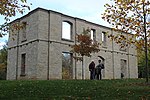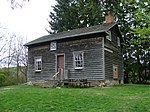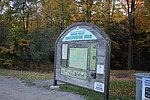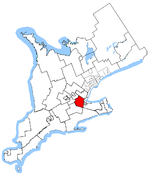Wentworth County, Ontario
Wentworth County, area 269,057 acres (1,089 km2), is a historic county in the Canadian province of Ontario. It was created in 1816 as part of the Gore District (1816-1849) in what was then Upper Canada and later Canada West (1841-1867). It was named in honour of Sir John Wentworth, the last governor of colonial New Hampshire, lieutenant-governor of Nova Scotia (1792 to 1808) and an intimate friend of William Jarvis, the first provincial secretary of Upper Canada. The county originally consisted of seven townships that formerly belonged to Haldimand, Lincoln and York Counties. Between 1850 and 1854, Wentworth County and Halton County were briefly joined for government purposes as the United Counties of Wentworth and Halton although for administrative purposes, they remained distinct. In 1973, Wentworth County was replaced by the Regional Municipality of Hamilton-Wentworth. In 2001, the Regional Municipality and its six constituent municipalities were amalgamated as the "megacity" of Hamilton.
Excerpt from the Wikipedia article Wentworth County, Ontario (License: CC BY-SA 3.0, Authors).Wentworth County, Ontario
Sawmill Trail, Hamilton
Geographical coordinates (GPS) Address Nearby Places Show on map
Geographical coordinates (GPS)
| Latitude | Longitude |
|---|---|
| N 43.25 ° | E -80 ° |
Address
Sawmill Trail
Sawmill Trail
L9H 7P6 Hamilton
Ontario, Canada
Open on Google Maps








